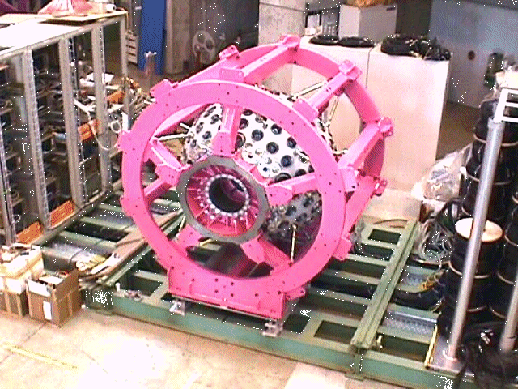






The calorimeter was designed as a self-supporting structure to exclude non-sensitive material within the calorimeter volume. The sphere is kept together by a spherical steel housing that has holes for the fitting cylinders that surround the PMTs and fix each crystal. The spherical housing itself is attached to two opposing steel cones which are held in place by an enclosing drum seen in Figure 2-4. The steel cones also define the beam entry and access holes and furthermore the lateral support for the veto crystals and thus define an axis of rotation symmetry (see ch. 3).

Stable measurement conditions also demand strict temperature control, since the scintillator and the PMT voltage dividers are temperature sensitive. In order to provide stable condition they are surrounded by 4 cm of Styrofoam (`thermal-house'). The thermal-house provides both thermal insulation and light-tightness. A dedicated cooling system which continuously blows cold air into the thermal-house recirculating the heated air (mostly energy dissipated by the PMT bases) in order to keep the temperature stable. In order to keep the humidity low a water cooling device operates close to 0°C. A system of fans and a heater then regulates the temperature to circa 16°.





